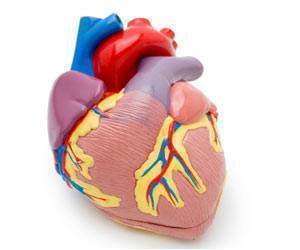If heart rate decreases rapidly as kids move into adulthood, it's an indicator that cardiovascular disease may be in their future.

‘Rapid heart rate declines were associated with higher total peripheral resistance and problems in pumping from left ventricle.’
Read More..




"An unexplained drop over time is not a good thing," says Dr. Gaston Kapuku, cardiovascular researcher at MCG's Georgia Prevention Institute and the study's corresponding author.Read More..
Looking at the resting heart rate at one moment in time, as opposed to how it trends from childhood to adulthood, is not a good thing either, Kapuku says.
The investigators looked at the resting heart rate up to 15 times over 21 years in 759 participants in the Augusta Heart Study, a longitudinal study designed to evaluate the development of risk factors for cardiovascular disease as children, with starting ages of 5-16 , grew into adulthood.
Enrollees included a near equal mix of Blacks and whites, and had a minimum of three resting heart rate measures taken over the course, and more than half had eight measures or more. Investigators also collected other longitudinal data like height and weight, body mass index, blood pressure and cardiac output.
Echocardiograms of the left ventricle also were available for 546 of the study participants over time. Like most muscles, the left ventricle tends to get bigger in response to working harder, like continuously pumping against higher blood pressure, but unlike other muscles, bigger does not translate to a stronger heart.
Advertisement
That means that unless it can be explained by extreme aerobic activity, significant drops in heart rate over time likely indicate a population at increased cardiovascular risk who may benefit from medications or a pacemaker to help normalize the rate, the investigators say. Exercise might also help intervene in these individuals, Kapuku notes.
But little is known about the clinical significance of heart rate trajectory patterns from childhood to young adulthood, Kapuku says.
The autonomic nervous system is in charge of body responses, like an increase in heart rate, that occur without us thinking about it. The branch known as the sympathetic nervous system enables healthy heart rate variability, so you can rapidly increase your blood pressure and heart rate to flee from danger.
Another branch, the parasympathetic nervous system, controls basic body functions when you are at rest, and tends to have more influence as we gain experience in life and become less excitable.
There is an established "heart rate variability conundrum" in Blacks, which is the irony that a heart that is responsive to demand is considered a good thing, and Blacks tend to have greater heart rate variability, but more heart problems, Kapuku says.
"You should have a wide normal range of action," Kapuku says, yet, as with many cardiovascular studies, young Blacks seem most at risk, and understanding why is something they are digging into, he says.
The association they have now found between a rapidly slowing resting heart rate, higher peripheral resistance and a larger ventricular mass is another "cardiovascular conundrum" that needs more exploration, they write.
The investigators had more than 6,230 resting heart rates to assess, and they categorized them into the high-decreasing group, moderate-decreasing group and low-decreasing group.
Thirty percent started with a low resting heart rate, which decreased relatively rapidly as they moved into young adulthood; 45.6% started with a moderate resting heart rate and experienced a moderate decrease; and just over 24% started with a high resting heart rate and maintained a low decrease. Over time the heart rates decreased 24.1, 19.1 and 17.4 beats per minute, respectively.
Echocardiography was used to measure the left ventricle in 546 of the participants.
When investigators compared resting heart rate trajectories with the left ventricular mass, they were surprised to find the fastest increases in left ventricular mass correlated with the fastest decreases in resting heart rate independent of other factors like age and sex.
Black participants were more likely to have the fastest decreases in resting heart rate, and biggest increases in the size of the left ventricle.
Rapid heart rate declines also were associated with higher total peripheral resistance -- the resistance of blood vessels to blood flow, which the left ventricle must pump against.
Source-Eurekalert












